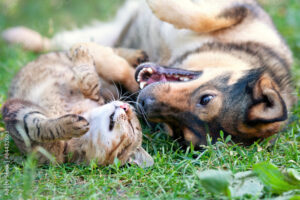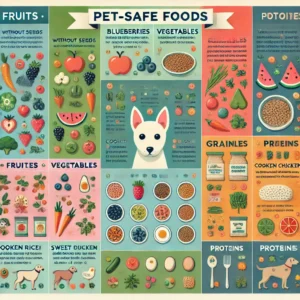Pets
6 Stunning new co-working spaces around the globe
Quis autem vel eum iure reprehenderit qui in ea voluptate velit esse quam nihil molestiae consequatur, vel illum qui.

At vero eos et accusamus et iusto odio dignissimos ducimus qui blanditiis praesentium voluptatum deleniti atque corrupti quos dolores et quas molestias excepturi sint occaecati cupiditate non provident, similique sunt in culpa qui officia deserunt mollitia animi, id est laborum et dolorum fuga.
Quis autem vel eum iure reprehenderit qui in ea voluptate velit esse quam nihil molestiae consequatur, vel illum qui dolorem eum fugiat quo voluptas nulla pariatur.
Temporibus autem quibusdam et aut officiis debitis aut rerum necessitatibus saepe eveniet ut et voluptates repudiandae sint et molestiae non recusandae. Itaque earum rerum hic tenetur a sapiente delectus, ut aut reiciendis voluptatibus maiores alias consequatur aut perferendis doloribus asperiores repellat.
Lorem ipsum dolor sit amet, consectetur adipisicing elit, sed do eiusmod tempor incididunt ut labore et dolore magna aliqua. Ut enim ad minim veniam, quis nostrud exercitation ullamco laboris nisi ut aliquip ex ea commodo consequat.
“Duis aute irure dolor in reprehenderit in voluptate velit esse cillum dolore eu fugiat”
Nemo enim ipsam voluptatem quia voluptas sit aspernatur aut odit aut fugit, sed quia consequuntur magni dolores eos qui ratione voluptatem sequi nesciunt.
Et harum quidem rerum facilis est et expedita distinctio. Nam libero tempore, cum soluta nobis est eligendi optio cumque nihil impedit quo minus id quod maxime placeat facere possimus, omnis voluptas assumenda est, omnis dolor repellendus.
Nulla pariatur. Excepteur sint occaecat cupidatat non proident, sunt in culpa qui officia deserunt mollit anim id est laborum.
Sed ut perspiciatis unde omnis iste natus error sit voluptatem accusantium doloremque laudantium, totam rem aperiam, eaque ipsa quae ab illo inventore veritatis et quasi architecto beatae vitae dicta sunt explicabo.
Neque porro quisquam est, qui dolorem ipsum quia dolor sit amet, consectetur, adipisci velit, sed quia non numquam eius modi tempora incidunt ut labore et dolore magnam aliquam quaerat voluptatem. Ut enim ad minima veniam, quis nostrum exercitationem ullam corporis suscipit laboriosam, nisi ut aliquid ex ea commodi consequatur.
Pets
From Shelter to Stardom: Inspiring Stories of Rescued Pets Who Found Fame
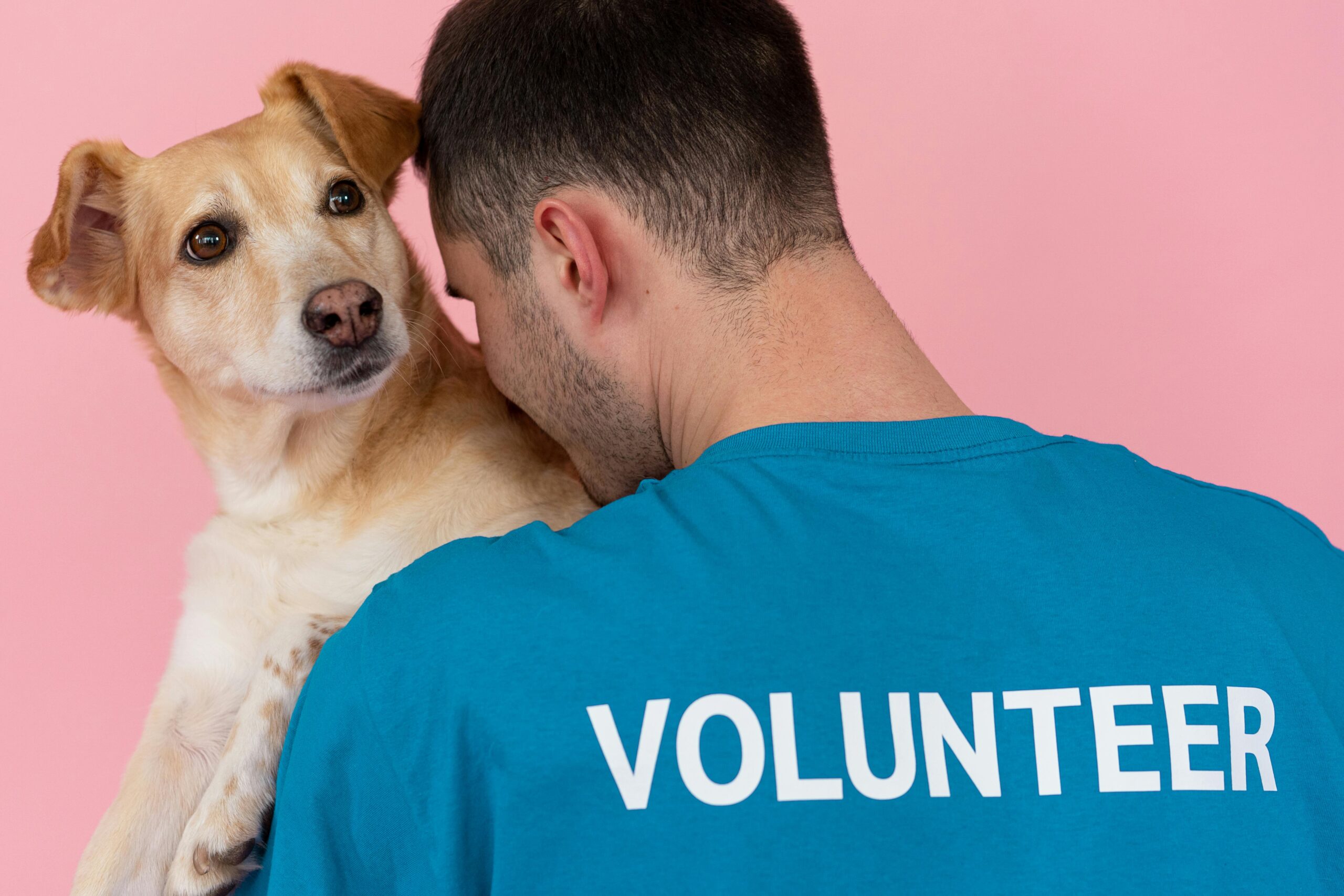
From Shelter to Stardom: Inspiring Stories of Rescued Pets Who Found Fame
”Rescued pets who found fame: The journey of a pet from a shelter to the dazzling lights of fame is nothing short of extraordinary. Imagine a shy, unkempt animal who once roamed the streets or faced abandonment, now gracing the covers of magazines, starring in viral videos, or inspiring millions as a symbol of resilience. These heartwarming tales shine a spotlight on the transformative power of compassion, the unyielding spirit of rescued animals, and the life-changing impact of giving second chances.
Every animal in a shelter carries a story—some are tales of survival against all odds, while others reflect the joy of finding a loving home. Among them, a few go on to achieve the remarkable, captivating the hearts of people worldwide. Their journeys are more than just rags-to-riches stories; they are a testament to the bond between humans and animals and a powerful reminder of the potential hidden behind those shelter walls.
In this article, “Rescued pets who found fame” we’ll delve into some of the most inspiring stories of rescued pets who defied the odds and rose to stardom. We’ll also explore how shelters play a vital role in transforming these animals’ lives and provide expert insights into how anyone can help give these animals a shot at a brighter future.
The Journey from Shelter to Stardom:Rescued pets who found fame
Every year, millions of animals find themselves in shelters, often through no fault of their own. While many are adopted into loving homes, a select few go on to achieve stardom, capturing the hearts of millions. These success stories inspire people to adopt rather than shop for pets, showcasing the incredible potential of shelter animals.
1. Grumpy Cat: The Internet Sensation
Grumpy Cat, whose real name was Tardar Sauce, became an internet icon thanks to her perpetually grumpy expression that perfectly contrasted her sweet demeanor. Born with feline dwarfism and an underbite, her unique appearance was the result of a genetic quirk. Despite these features, or perhaps because of them, she won the hearts of millions worldwide.
Rescued from a humble beginning, Tardar Sauce’s journey to fame began when her owner’s brother posted her photo on Reddit in 2012. The image went viral almost instantly, spawning countless memes that captured her now-famous “unimpressed” expression. Grumpy Cat quickly transcended the online world, appearing on television shows, starring in commercials, and even becoming the face of major advertising campaigns.
Her fame didn’t stop there. Grumpy Cat’s success led to a New York Times bestselling book, Grumpy Cat: A Grumpy Book, and a holiday movie, Grumpy Cat’s Worst Christmas Ever. She made appearances at major events, including SXSW and award shows, solidifying her status as a pop culture phenomenon.
Beyond the laughter and memes, Grumpy Cat’s fame brought a more profound impact. She became a symbol of the joy and uniqueness that adopted and rescued pets can bring into our lives. Her story highlighted the importance of celebrating individuality and embracing the unexpected—traits often overlooked in shelter animals. Millions of people were introduced to the idea that shelter pets, like Grumpy Cat, could be extraordinary in their own right.
Although Tardar Sauce passed away in 2019, her legacy endures as a beacon of hope for animals in shelters worldwide. Her story continues to inspire people to adopt, reminding us all that even the smallest or most overlooked creatures can have the biggest impact.
2. Doug the Pug: From Shelter to Social Media Royalty
Doug was adopted from a shelter and quickly won over the internet with his adorable outfits and relatable captions. With millions of followers on Instagram, Doug became a brand ambassador, proving that rescued pets can live extraordinary lives.
3. Hamilton the Hipster Cat
This rescue cat became famous for his perfectly shaped white mustache. His quirky look and adorable personality earned him a massive online following and numerous media features, showing that shelter pets can become influencers too.
4. Faith the Biped Dog
Faith’s story is nothing short of miraculous. Born with only two functioning legs, she faced an uphill battle for survival right from the start. Abandoned as a puppy, she was on the brink of euthanasia when a compassionate family intervened, giving her the chance she so desperately needed.
With unwavering dedication, Faith’s adoptive family worked tirelessly to help her adapt to her condition. Through careful training and encouragement, Faith defied the odds and learned to walk upright on her hind legs. Her incredible ability to stand tall and move confidently became a spectacle that captivated everyone who saw her.
As Faith’s story gained traction, she quickly became a symbol of resilience and determination. Her unique way of walking wasn’t just a physical achievement—it was a testament to the power of perseverance and the strength of the human-animal bond. Faith’s journey took her to places she’d never dreamed of. She made appearances on major television shows, inspired soldiers at military bases, and became a motivational figure for people facing their own challenges.
Faith’s impact extended beyond the realm of entertainment. She became a global ambassador for animals with disabilities, challenging perceptions and advocating for the value of all lives, regardless of physical limitations. Her story resonated with millions, reminding us all that with love, support, and determination, even the most daunting obstacles can be overcome.
Faith’s journey from a helpless puppy to an international inspiration continues to shine as a beacon of hope for animals and humans alike. She taught the world to embrace differences, celebrate resilience, and never underestimate the potential of a second chance.
5. Esther the Wonder Pig
Initially mistaken for a micro pig, Esther grew to a whopping 600 pounds. Her rescuers turned her story into a platform for promoting veganism and animal rights. Esther’s fame demonstrates how rescue animals can drive social change.
How Shelters Play a Role in Transforming Lives:Rescued pets who found fame
Shelters provide a safe haven for animals in need, offering them food, medical care, and love. They also serve as a bridge between these animals and their forever homes. Here are a few ways shelters contribute to these success stories:
- Behavioral Training: Many shelters provide training to help animals adapt to home environments.
- Health Care: Vaccinations, spaying/neutering, and treatments ensure pets are ready for adoption.
- Socialization: Shelters expose animals to people and other pets, making them more adoptable.
Expert Tips for Adopting a Star in the Making Rescued pets who found fame
- Look Beyond Appearances: The scruffiest pets often have the most potential.
- Consider Personality: Choose a pet that matches your lifestyle and energy level.
- Provide Love and Patience: Many shelter animals need time to adjust.
- Invest in Training: Basic training can bring out the best in any pet.
- Share Their Story: Social media is a powerful tool for showcasing your pet’s unique charm.
Outbound Links for More Inspiration
- Petfinder: Find adoptable pets near you.
- The Humane Society: Learn about animal welfare and adoption.
- ASPCA: Support animal rescue initiatives.
- Best Friends Animal Society: Resources for adopting and caring for pets.
- Doug the Pug’s Instagram: Follow one of the most famous rescue pets.
FAQs About Rescued Pets:Rescued pets who found fame
Q1: Can rescued pets really adjust to fame?
A1: Yes, many rescued pets thrive with proper care, training, and love. Their unique stories often make them more relatable to audiences.
Q2: How can I adopt a pet from a shelter?
A2: Visit your local shelter or use platforms like Petfinder to find pets in need of homes.
Q3: Are shelter pets healthier than purchased pets?
A3: Shelters ensure pets are vaccinated and spayed/neutered, often making them healthier than pets from breeders or pet stores.
Q4: How do I make my adopted pet famous?
A4: Share their story on social media, participate in contests, and highlight their unique traits.
Q5: Why should I adopt instead of buying?
A5: Adopting saves lives and helps reduce overpopulation in shelters. Plus, shelter pets often make incredibly loyal companions.
Conclusion:Rescued pets who found fame
The stories of pets who rose from shelters to stardom prove that every animal deserves a chance at a better life. By choosing to adopt, you’re not only changing a pet’s life but also opening the door to countless possibilities. Who knows? Your rescue pet might just become the next big star.
Thanks for reading and have a great day!
please post your thoughts in the comments section if you have any.please feel free to share!
Pets
Can Cats and Dogs Really Be Best Friends? Viral Stories and Expert Tips
Can Cats and Dogs Really Be Best Friends? Viral Stories and Expert Tips
“Cats and dogs best friends”—the timeless frenemies of the animal world. From classic cartoons to well-worn idioms, they’ve been painted as eternal rivals, locked in a perpetual game of chase and hiss. Pop culture, folklore, and even children’s books have long fed the narrative that these two species are destined to clash. But here’s the truth: when given the right environment and a little patience, cats and dogs can not only coexist peacefully but also forge deep, unbreakable bonds.
Surprising? Absolutely. Yet, countless real-life stories and expert-backed insights prove that these so-called adversaries often have more in common than meets the eye. From cuddling on the couch to teaming up for backyard adventures, cats and dogs can become the ultimate dynamic duo. If you’re ready to explore the fascinating world of feline-canine friendships, buckle up for a journey filled with heartwarming tales, expert tips, and plenty of laughs. Let’s get started
Heartwarming Stories of Unlikely Friendships :”Cats and dogs best friends”
1. Max and Whiskers: The Dynamic Duo: “Cats and dogs best friends”
Max, a lovable Golden Retriever with an undeniable zest for life, had always been a social butterfly. When his owner decided to adopt Whiskers, a spunky tabby cat with a penchant for mischief, sparks flew—and not the bad kind. Their very first interaction set the tone for their relationship: Whiskers, curious but cautious, swiped at Max’s wagging tail with precision… and missed entirely. Max, ever the optimist, took it as an invitation to play.
What started as a clumsy introduction quickly blossomed into a heartwarming friendship. Today, the two are the stars of a wildly popular TikTok channel boasting over 2 million followers. Their videos feature everything from epic tug-of-war battles to synchronized nap sessions, where Whiskers curls up on Max’s fluffy back. Fans especially love the clips of them sharing treats, with Whiskers deftly stealing a bite from Max’s biscuit pile while Max watches in amused resignation.
Their owner credits their bond to Max’s gentle demeanor and Whiskers’ fearless personality. “They balance each other out perfectly,” she says. “Max teaches Whiskers patience, and Whiskers teaches Max how to embrace his playful side.” Together, they’ve not only captured the hearts of millions but also redefined what it means to be best friends.
2. Charlie and Luna: Adventure Buddies :”Cats and dogs best friends”
Charlie, an energetic Border Collie with a never-ending supply of enthusiasm, and Luna, a Siamese cat with a knack for finding trouble, are the internet’s newest adventure icons. This unlikely duo has taken Instagram by storm with their jaw-dropping hiking escapades, proving that friendship knows no bounds—or species.
Their adventures began when their owners decided to introduce Luna to Charlie’s favorite hobby: hiking. To everyone’s surprise, Luna not only took to it like a natural but also became Charlie’s most loyal trail buddy. Decked out in matching harnesses and backpacks, the pair explores scenic trails, scales rocky terrains, crosses rivers, and even poses for selfies that rival those of professional travel influencers.
One of their most popular posts features Luna fearlessly perched on Charlie’s back as he wades through a stream, her curious eyes scanning the horizon while Charlie carefully navigates the water. Their owners say it’s a testament to their complementary personalities: Charlie’s protective instincts ensure Luna’s safety, while Luna’s daring spirit encourages Charlie to push his boundaries.
“They’re an incredible team,” their owner shares. “Charlie watches over Luna like a big brother, and Luna’s confidence seems to inspire Charlie to embrace new challenges. They’ve taught us that with trust and teamwork, anything is possible.”
Their Instagram page, filled with breathtaking vistas and heartwarming moments, has garnered hundreds of thousands of followers. Fans often comment on how their bond exemplifies pure joy and mutual respect, making Charlie and Luna true ambassadors of interspecies friendship
3. Buddy and Bella: Shelter Survivors Turned Besties :”Cats and dogs best friends”
Buddy, a Labrador with a wagging tail so energetic it could power a small town, met Bella, a senior Ragdoll cat with a serene presence, at a local rescue shelter. Both had experienced their share of hardships, but it was their shared fear of thunderstorms that brought them together. During their first storm in the shelter, Buddy’s nervous pacing caught Bella’s attention. Without hesitation, she curled up next to him, purring softly. That moment marked the beginning of an unbreakable bond.
When a kind-hearted family adopted them together, they quickly became inseparable. Buddy and Bella have since become each other’s emotional anchors. During storms, Bella’s calming purrs soothe Buddy’s anxiety, while Buddy’s warm presence offers Bella the security she needs. Their owners often find them snuggled up on the couch, with Bella nestled against Buddy’s side as he drapes a protective paw over her.
Beyond their storm-time cuddles, Buddy and Bella’s antics bring endless joy to their household. Bella’s playful swipes at Buddy’s tail and Buddy’s gentle nudges to coax her into playtime have become a daily source of laughter. Their story has inspired many, reminding people that even the most unlikely friendships can blossom under the right circumstances.
“They’re not just pets; they’re family,” their owner shares. “Watching them comfort and care for each other is a daily reminder of the power of love and companionship.”
Expert Tips for Fostering Cat-Dog Friendships:”Cats and dogs best friends”
While these stories of interspecies friendship are undeniably heartwarming, achieving such harmony doesn’t happen overnight. Building a bond between a cat and a dog takes time, patience, and a strategic approach. Whether you’re introducing a new pet or trying to mend an existing relationship, here’s how you can encourage a meaningful connection between your feline and canine companions:
1. Start with Slow Introductions
- Let them sniff each other’s bedding or toys before meeting face-to-face.
- Use baby gates to create a safe barrier during initial interactions.
2. Respect Their Personalities
- Every pet is unique. A shy cat and an overly enthusiastic dog might need extra time to adjust.
- Avoid forcing interactions; let them approach each other at their own pace.
3. Create Safe Spaces
- Cats love elevated spaces where they can observe without feeling threatened.
- Ensure dogs have their own space too, where they can relax without feeling overstimulated.
4. Train Your Dog
- Basic commands like “sit,” “stay,” and “leave it” can help manage your dog’s behavior around a cat.
- Reward calm and gentle interactions with treats and praise.
5. Supervise and Be Patient
- Never leave them unsupervised until you’re confident in their behavior.
- Building trust takes time—sometimes weeks or even months.
The Science Behind Cat-Dog Friendships :”Cats and dogs best friends”
Why do some cats and dogs get along so well? Experts believe it boils down to:
- Socialization: Pets introduced to other species at a young age are more likely to coexist peacefully.
- Communication: While cats and dogs have different body languages, they can learn to understand each other over time.
- Temperament: Breeds known for their friendliness (e.g., Golden Retrievers, Ragdolls) are more likely to form cross-species bonds.
Research from PLOS One shows that multi-pet households report higher rates of cat-dog friendships when owners take proactive steps during introductions.
FAQs: Your Burning Questions Answered: “Cats and dogs best friends”
1. Do cats and dogs naturally dislike each other?
Not necessarily! While their communication styles differ, their behavior often depends on individual personalities and experiences.
2. Can all cats and dogs become friends?
Not always. Some cats and dogs simply don’t get along, and that’s okay. Respecting their boundaries is key.
3. What’s the best age to introduce them?
Introducing a kitten to a puppy often yields the best results, but adult pets can bond too with patience and proper guidance.
4. How long does it take for them to get along?
It varies. Some pets click instantly, while others may need weeks or even months to coexist peacefully.
5. Are certain breeds better suited for cat-dog friendships?
Yes. Breeds known for their calm and friendly nature, like Golden Retrievers and Maine Coons, often adapt well to multi-species households.
Common Challenges and How to Overcome Them :”Cats and dogs best friends”
1. Territorial Behavior
- Solution: Provide separate feeding areas and sleeping spaces to reduce competition.
2. Overexcitement in Dogs
- Solution: Use training and calming techniques to manage your dog’s energy levels.
3. Fearful Cats
- Solution: Offer hiding spots and let your cat approach the dog on their terms.
4. Resource Guarding
- Solution: Teach both pets to share toys and treats through positive reinforcement.
Resources for Pet Parents
- ASPCA Guide to Introducing Pets
- PetMD’s Tips on Cat and Dog Harmony
- Humane Society’s Adoption Stories
- PLOS One Study on Pet Behavior
Cats and dogs don’t have to be rivals. With the right approach, they can form a bond that’s as adorable as it is inspiring. Whether it’s through viral stories or your own experiences, the journey of fostering a cat-dog friendship is one of patience, humor, and countless heartwarming moments. Who knows? Your furry friends might just become the next internet sensation—or, at the very least, the stars of your household!
Thanks for reading and have a great day!
please post your thoughts in the comments section if you have any.please feel free to share!
Pets
Boost Your Pet’s Wellness: Tips for Happy Animals
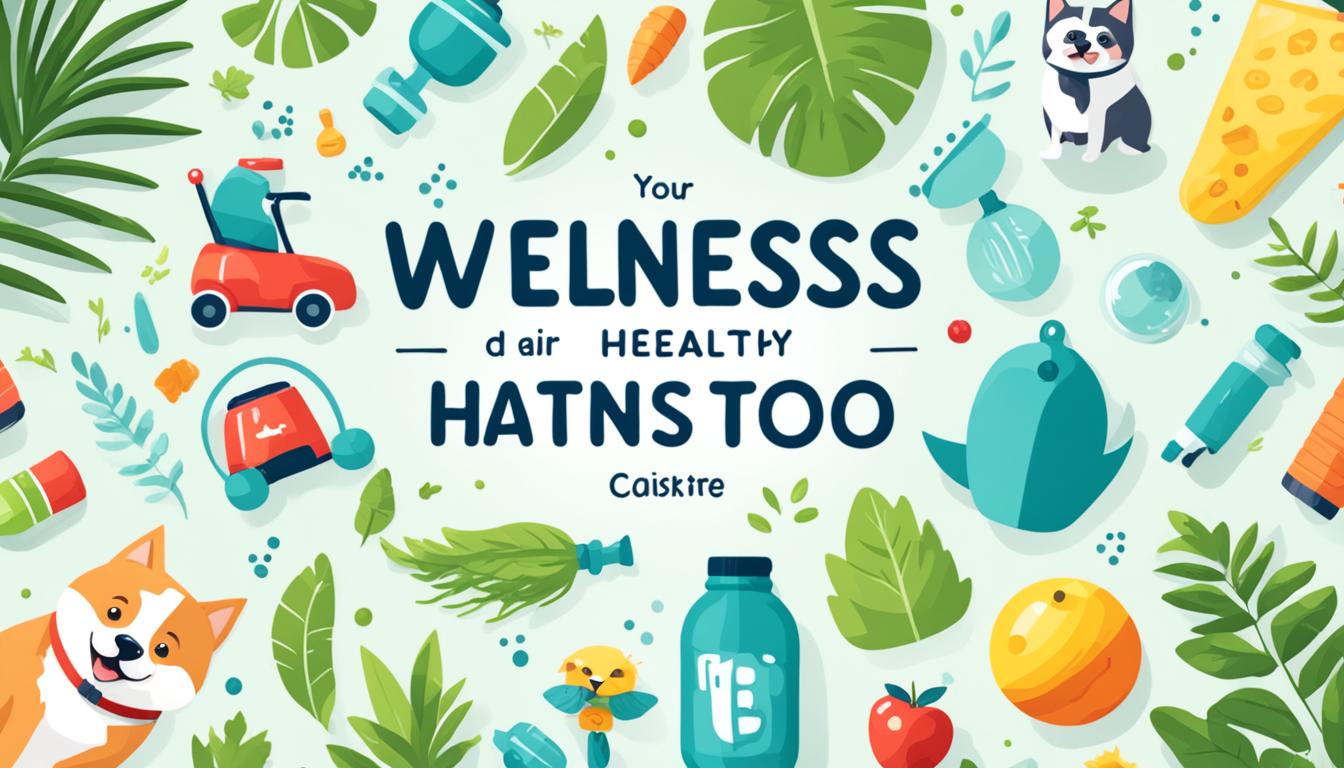
Unlocking the Secrets to Pet Happiness: It’s More Than Just Belly Rubs!
wellness for Pet: When it comes to pet care, feeding and exercise are just the basics—like knowing you need coffee in the morning but ignoring that tiny voice saying, “Maybe I should eat something green today.” Yep, our pets need that extra bit of attention too!
Ensuring your pet’s wellness goes way beyond a scoop of kibble and a daily walk around the block. It’s about crafting a well-rounded lifestyle that hits all the major points—physical health, mental stimulation, emotional comfort, and a balanced diet. We’re talking holistic pet care, people!
Imagine this: a happy dog that doesn’t eat your shoes out of boredom, a cat that doesn’t give you the classic side-eye of disappointment (okay, maybe just less frequently), or a rabbit that doesn’t turn into a fluffy couch potato. If that sounds like the dream, then buckle up! This article will serve up a mix of practical tips, funny insights, and a healthy dose of “Why didn’t I think of that?” moments.
Whether you’re parenting a bouncy puppy, a mysterious feline overlord, or a laid-back bunny who gives “chilling out” a whole new meaning, these wellness tips will make your furry friends wag, purr, or flop their ears in delight. Let’s dive in!
1. Nutrition: Because Not All Pets Want to Eat Like Trash Pandas
Wellness For Pet: Okay, we all know that pets have zero shame when it comes to food. If it looks vaguely edible, they’ll give it a try. Whether it’s that mysterious something they dug up in the yard, the crumbs you thought were hidden under the couch, or that gourmet dinner you left unattended for five seconds—nothing is off-limits to a hungry pet. Honestly, if you dropped your car keys, there’s a good chance they’d give them a taste, just to be sure.
But here’s the thing: keeping them healthy isn’t just about dodging the latest “what’s-that-in-your-mouth?” emergency. Sure, prying a sock out of Fido’s jaws (again) counts as a mini workout for you, but when it comes to wellness, it’s about ensuring they get the right nutrients to stay healthy, energetic, and (let’s be real) fabulously adorable.
Balanced Diet Essentials (wellness for pet)
Imagine this: Your pet’s diet is like the fuel you put in a fancy sports car. You wouldn’t put regular gas in a Ferrari, right? (Unless you’re aiming for an emergency trip to the mechanic.) It’s the same with your furry family member. Proper nutrition isn’t about just filling them up—it’s about giving them the premium stuff that makes them shine.
Here’s what you should keep in mind: Let’s talk food! It’s not about being fancy, but about hitting the essentials:
- High-quality Protein: Because your cat can’t live off nibbling the occasional houseplant (even if they try). Look for pet foods that list real meat as the primary ingredient, not “mystery meat by-product.Your pet needs high-quality protein for muscles, energy, and those dramatic zoomies they perform around the house at midnight. Low-quality proteins—or worse, by-products—might fill their bellies, but it’s not going to make them feel or look like the neighborhood superstar.”
- Healthy Fats: Shiny Coat, Happy Heart: Healthy fats are like the magic behind a silky coat and a healthy heart. Omega-3 and Omega-6 fatty acids do wonders for their skin and fur, making them soft, shiny, and ready for a belly rub (or an Instagram photo-op). Plus, they help with brain function, because even your mischievous kitten has a genius hiding somewhere.
- Vitamins and Minerals for Total Health: To keep your dog’s bones strong enough to keep playing fetch until your arm falls off. No one wants a sluggish pet who’s just lounging around like a potato. The right vitamins and minerals keep their bones strong, boost their immune system, and ensure they’re ready for whatever adventures (or mischief) come their way. Think of it like a superhero’s multivitamin—keeping them primed for action!
- No Junk Food Allowed: Avoid the fillers and sketchy additives. Your pet deserves better than a diet of “animal by-products” and unpronounceable chemicals! Look, we get it. Those big puppy-dog eyes are hard to resist when you’re holding a slice of pizza. But remember: what’s okay for you isn’t necessarily good for them. Junk food can lead to digestive upsets, allergies, and health problems down the line. It’s best to avoid the “sneaky treats” (sorry, pizza crust) and focus on foods that are truly good for them.
Pro Tip: : If your pet is suddenly more interested in what’s on your plate than in their bowl, it might be time to reevaluate their diet. Pets, like people, get bored with the same old stuff day after day. A little variety—think new flavors or textures—can make a big difference!
Watch Out for the Sneaky “No-Nos”
wellness for pet: Just because they can eat it, doesn’t mean they should. Pets often think they’re nature’s garbage disposals, but there are some foods that should never make it past their whiskers:
- Chocolate: Yes, we all know this one, but it’s worth repeating. Dogs, in particular, seem to have a sixth sense for finding chocolate, and they act like it’s the ultimate prize. But it’s a big no-no—it can be toxic and lead to serious health issues.
- Grapes and Raisins: Who knew such tiny fruits could be such a big problem? They can cause kidney failure in dogs, so keep your fruit bowl out of reach.
- Onions and Garlic: These kitchen staples are a hazard for pets, potentially leading to anemia. They may add flavor to your cooking, but they can cause some serious problems for your furry friends.
- Avocado: Great for your toast, but not for your pets. The persin in avocados can cause stomach upset in dogs and serious health issues in birds.
- Xylitol: This sugar substitute hides in a surprising number of things, from sugar-free gum to peanut butter. It’s harmless to humans but can be deadly to pets, causing blood sugar crashes and liver damage.
The Power of Fresh, Natural Ingredients
Here’s the secret to a truly fabulous pet diet: fresh, natural ingredients. These are the building blocks of a healthy life—just like you feel better when you eat fresh fruits and veggies instead of an entire bag of chips (even though chips are awesome).
- Lean Meats: Chicken, turkey, and fish provide the protein your pet needs without all the excess fat. Cook them well and skip the seasoning (your dog doesn’t need a salt addiction).
- Veggie Goodness: Yes, dogs can eat vegetables, and some cats will even nibble on them too! Sweet potatoes, carrots, and green beans are favorites that pack a nutritional punch. They’re like nature’s crunchy snack—minus the guilt.
- Fruit Treats: Apple slices (without seeds), blueberries, and bananas make fantastic, healthy treats. Just remember to serve them in moderation. After all, no one wants a sugar rush—even if it’s from fruit!
- Wholesome Grains: Brown rice, oats, and barley are great for keeping your pet’s energy up and digestion smooth. Skip the processed stuff; your pet’s tummy will thank you!
Pro Tip: Keep treats healthy and simple. A slice of apple can be just as exciting as a store-bought treat (plus, it won’t stink up your coat pocket).
Mixing It Up: Making Mealtime Exciting(wellness for pet)
It’s no secret—pets love routine. But mealtime doesn’t have to be boring! A few small changes can make a huge difference in keeping your pet interested in their food:
- Rotating Proteins: Switch up the protein source every once in a while—chicken this week, beef next, maybe some salmon in between. It keeps things exciting and ensures they get a variety of nutrients.
- Adding Toppers: A spoonful of plain, unsweetened pumpkin or a dash of plain yogurt can make your pet’s regular food feel like a gourmet dish. It’s like adding sprinkles to a cupcake—except healthy.
- DIY Treats: Try your hand at making simple homemade treats. Freeze some blended blueberries and water into ice cube trays for a refreshing summer snack, or bake some pumpkin and oat cookies for a chewy reward. Your pet won’t know you’re giving them a health boost!
Pro Tip: Always introduce new foods gradually, watching for any signs of tummy troubles. Pets, like people, don’t always appreciate sudden changes to their diet.
Why the Right Diet Equals a Happy Pet (and a Happy You)
A well-fed pet is a happy pet, and a happy pet means a happier you. When your pet is getting all the nutrients they need, you’ll notice the difference. Their fur will shine, their eyes will sparkle, and they’ll have energy to play (but not so much that they’re bouncing off the walls 24/7). And let’s be real—nothing beats a content pet curling up next to you after a satisfying, healthy meal.
So, the next time your dog looks longingly at your cheeseburger or your cat eyes your bowl of spaghetti, just remember: you’re doing them a favor by sticking to the good stuff. And who knows? With the right diet, your pet might finally stop trying to steal your socks… or at least, they’ll be too busy enjoying their healthy dinner to notice you dropped one.
2. Regular Exercise for Physical Health (wellness for pet)
Exercise isn’t just about burning off energy—it’s crucial for your pet’s physical and mental well-being. Here are some ways to incorporate exercise into your pet’s daily routine:
- Daily Walks: For dogs, a daily walk provides physical activity and mental stimulation through new sights, sounds, and smells.
- Interactive Play: Use toys like feather wands for cats or balls for dogs to encourage active play. This keeps them agile and maintains a healthy weight.
- Fetch and Tug-of-War: These games help your dog stay active while strengthening your bond.
- Cat Towers and Puzzle Toys: For indoor cats, provide climbing spaces and puzzle feeders to engage their natural hunting instincts.
- Exercise for Small Pets: Don’t forget that small pets like rabbits and guinea pigs need exercise too. Allow them space to run, explore, and play safely.
3. Mental Stimulation: Keep Your Pet’s Mind Sharp
WellnessFor Pet: Pets need mental exercise just as much as physical. Boredom can lead to destructive behavior, stress, and anxiety. Stimulate your pet’s mind with:
- Training Sessions: Teach new tricks or commands. Use positive reinforcement like treats and praise to make learning enjoyable.
- Puzzle Toys and Food Dispensers: These encourage your pet to think, problem-solve, and engage in natural foraging behavior.
- Interactive Playtime: Play hide-and-seek with treats or toys. For dogs, try agility courses that challenge them physically and mentally.
- Socialization: Introduce your pet to new environments, people, and animals gradually to keep their social skills sharp and reduce anxiety.
4. Proper Grooming: More Than Just a Pretty Coat
Regular grooming is essential for your pet’s hygiene and health. It also helps you bond with your pet and detect potential health issues early.
- Brushing: Helps remove dirt, dead hair, and prevents matting. Different breeds require different grooming schedules, so learn what’s best for your pet.
- Bathing: Keep your pet clean with occasional baths using pet-friendly shampoo. Avoid over-bathing, which can dry out the skin.
- Nail Trimming: Prevent overgrown nails that can cause discomfort or injury.
- Dental Care: Use pet-safe toothpaste and brushes to maintain oral health. Dental chews and toys also help reduce plaque and tartar buildup.
- Ear Cleaning: Check ears regularly for signs of infection like redness or foul odor. Clean gently with vet-recommended products.
5. Veterinary Care: Regular Check-Ups and Preventive Care
Preventive veterinary care is vital to keeping your pet healthy throughout its life.
- Annual or Bi-Annual Check-Ups: Schedule routine vet visits to detect health issues early.
- Vaccinations: Keep your pet’s vaccinations up to date to protect them from diseases.
- Parasite Prevention: Use flea, tick, and heartworm preventives regularly, especially if your pet spends time outdoors.
- Spaying/Neutering: Helps prevent health problems like certain cancers and reduces the risk of behavioral issues.
- Monitor Behavior: Keep an eye on any changes in your pet’s behavior, eating habits, or energy levels, as they can indicate health problems.
6. Safe and Comfortable Living Environment (wellness for pet)
Creating a pet-friendly living space enhances your pet’s comfort and safety.
- Provide a Cozy Bed: A comfortable bed supports good sleep, crucial for your pet’s well-being.
- Pet-Proof Your Home: Remove any toxic plants, secure electric cords, and ensure that hazardous items are out of reach.
- Fresh Water: Always provide clean, fresh water in accessible areas.
- Safe Toys: Choose non-toxic, durable toys that won’t break easily or pose choking hazards.
- Calming Spaces: Set up a quiet space where your pet can retreat during stressful times like thunderstorms or parties.
7. Addressing Behavioral Issues: Understanding Your Pet’s Needs
Behavioral problems can indicate unmet needs, boredom, or stress. Addressing them early ensures a happier pet.
- Separation Anxiety: Practice leaving for short periods, gradually increasing the time you’re away. Provide comfort items like familiar blankets or toys.
- Destructive Chewing: Ensure your dog has enough exercise, and provide chew toys as alternatives. For cats, scratching posts can redirect destructive scratching.
- Excessive Barking or Meowing: Identify the cause—boredom, fear, attention-seeking—and address it accordingly. Training and positive reinforcement can help modify unwanted behavior.
- Aggression: Seek professional help from a vet or animal behaviorist if your pet shows signs of aggression.
8. Bonding and Social Interaction (wellness for pet)
Social interaction plays a crucial role in your pet’s happiness. Strengthen the bond between you and your pet with:
- One-on-One Time: Spend quality time playing, petting, or simply sitting with your pet. Dogs and cats thrive on affection and attention.
- Routine: Pets feel more secure with a consistent daily routine. Stick to a schedule for feeding, playtime, and walks.
- Meet Other Pets: Arrange playdates or visits to dog parks if your pet enjoys socializing with other animals.
- Positive Reinforcement: Reward good behavior with treats, praise, or extra playtime.
9. Traveling with Your Pet: Ensuring Safe Adventures (wellness for pet)
Travel can be stressful for pets, so preparing ahead can make trips enjoyable for everyone.
- Use a Carrier or Seat Belt: Ensure safety in cars with a secure carrier or a pet seat belt.
- Pack Essentials: Bring your pet’s food, water, favorite toys, and any medications.
- Comfort Stops: Make frequent stops for bathroom breaks and to stretch.
- Acclimate Gradually: Introduce your pet to car travel or new environments gradually to reduce anxiety.
10. Managing Stress and Anxiety (wellness for pet)
Pets can experience stress and anxiety due to loud noises, new environments, or changes in routine. Help your pet stay calm with these strategies:
- Provide a Safe Space: Create a quiet, cozy area where your pet can retreat when feeling overwhelmed.
- Calming Aids: Use pheromone diffusers, calming treats, or music designed to soothe pets.
- Stick to Routines: Pets thrive on routine, so try to maintain regular feeding, play, and sleep schedules.
- Gradual Exposure: If your pet fears specific noises or situations, gradually expose them in a controlled, positive way to build confidence.
Conclusion
Boosting your pet’s wellness is about creating a balanced, enriching life that caters to their physical, mental, and emotional needs. From a healthy diet to mental stimulation and regular veterinary care, the tips above cover a holistic approach to ensure your pet lives a happy, fulfilled life. Remember, every small change contributes to your pet’s overall well-being, making them not only healthier but also a more joyful companion.
References
- American Veterinary Medical Association (AVMA). “Pet Care.” Retrieved from AVMA Pet Care.
- PetMD. “Tips to Keep Your Pet Healthy.” Retrieved from PetMD.
- The Humane Society of the United States. “Tips for a Happy, Healthy Pet.” Retrieved from Humane Society.
- RSPCA. “Pet Wellbeing.” Retrieved from RSPCA.
Thanks for reading and have a great day!
please post your thoughts in the comments section if you have any.please feel free to share!
-

 Pets8 years ago
Pets8 years agoThese ’90s fashion trends are making a comeback in 2017
-

 Pets8 years ago
Pets8 years agoThe final 6 ‘Game of Thrones’ episodes might feel like a full season
-

 Dogs3 years ago
Dogs3 years agoWhat causes stress in dogs, the signs and how to provide relief
-

 Pets8 years ago
Pets8 years agoAccording to Dior Couture, this taboo fashion accessory is back
-
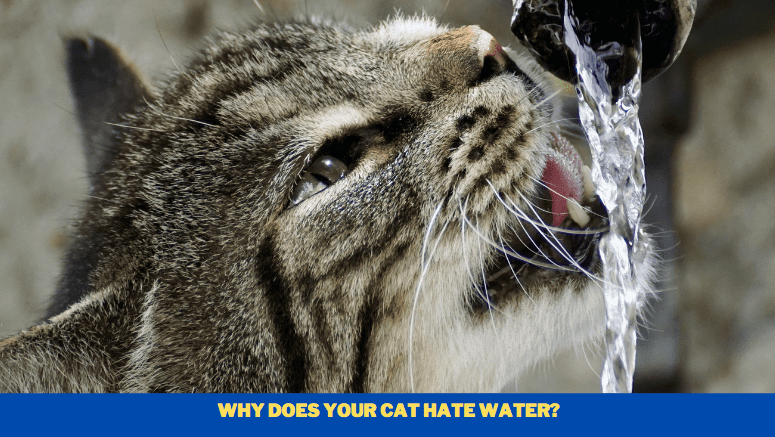
 Cats3 years ago
Cats3 years agoWhat Is It About Cats And Water That Makes Them So Fearful?
-

 Facts3 years ago
Facts3 years agoPeople Ask for Tougher Laws Against Animal Poaching
-

 Dogs3 years ago
Dogs3 years agoThunder and Anxiety in Dogs: How to Help Your Dog Cope
-

 Pets8 years ago
Pets8 years agoThe old and New Edition cast comes together to perform



